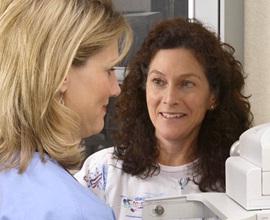St. Luke’s adding multiple supplemental breast cancer screening technologies

In addition to meeting a new Food & Drug Administration amendment, St. Luke’s is positioning itself to offer the best breast cancer screening options in Idaho.
On Sept. 10, the FDA finalized an update to the Mammography Quality Standards Act requiring all patients who have mammograms to be notified of their breast tissue density.
Nearly half of all women who are 40 and older who get mammograms are found to have dense breast tissue.“Those with dense tissue are at increased risk for breast cancer … some cancers are masked by dense tissue on a mammogram,” said Jessica Herr, director of practice at St. Luke’s High Risk Breast Clinic/Breast Care Services. “If the patient falls in the dense category, they should discuss with their doctor to decide if supplemental screening would be beneficial.”

Mammograms are still the best way to get checked, as the additional screening serves as a supplement, not a replacement.
To face that need, three types of imaging will be added across St. Luke’s.
- Automated whole breast ultrasound has been up and running since June at St. Luke’s Nampa. ABUS offers fast, noninvasive, radiation-free screening.
- Contrast enhanced mammography utilizes an iodine-based contrast and is even more sensitive than ABUS. It will be available by the end of the year, located in Nampa.
- Abbreviated MRI is the most sensitive of the modalities, taking approximately 8 minutes instead of the typical 30, involving an IV contrast and a scan in an enclosed space. It is expected to be available later this fall in Boise and Magic Valley. Full MRI is already available in Boise, Nampa, Eagle, Magic Valley and Wood River.
“This empowers the patient and the physician to make the best decision, having multiple options,” said Dr. Huy Pham, a St. Luke’s breast radiologist. “Not everyone that is in the dense tissue categories will need the screening … this just ensures we can provide the best care possible.”
Said Herr: “It gives us a more thorough look and in turn increase detection rates earlier and hopefully save lives.”
According to the National Breast Cancer Foundation, as of June 2023, only four states had a lower screening rate than Idaho. For women, approximately one in eight will develop breast cancer in their lifetime.
With further screening options, early detection is possible and therefore a higher likelihood of survival.
“Annual mammograms are still the gold standard, but one size doesn’t fit all,” Dr. Pham said. “We’re so proud to have these modalities and it will make a difference.”About The Author

Dave Southorn works in the Communications and Marketing department at St. Luke's.



